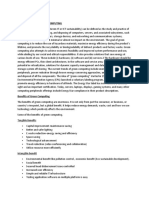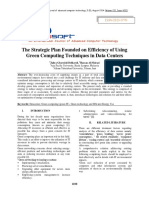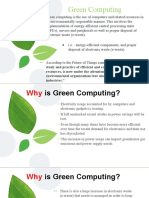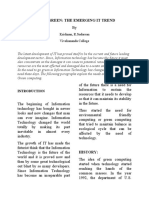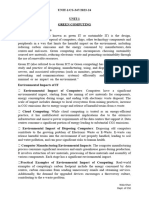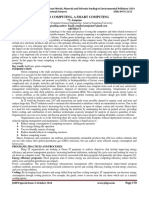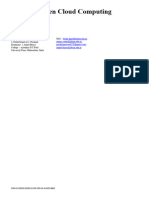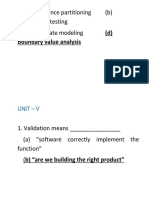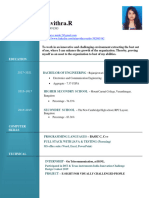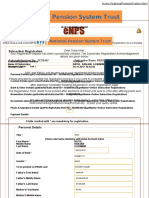PlanetTogether IT Reference Guide
Overview
This guide will help IT personnel determine how their existing hardware and network
infrastructure can be used or expanded to support PlanetTogether software. This guide will cover
hardware requirements for a server as well as end user’s computers, failover and recovery, and
possible impact on users from limited networks. Content provided is for planning and informative
purposes only. This guide does not contain step by step instructions for implementing or
configuring PlanetTogether software features.
References to the phrase ‘PlanetTogether’ in this document refers to the Advanced Planning and
Scheduling software provided by PlanetTogether Inc.
Note that this is not the PlanetTogether installation guide. Installation instructions can be found
online at download.planettogether.com.
Hardware Selection
The recommended hardware depends on if PlanetTogether will be running on a dedicated
machine, or sharing resources with other demanding applications. If running PlanetTogether on a
dedicated machine, the Workstation recommendation is ideal. If the machine will be running
other applications such as SQL server, ERP software, or PlanetTogether clients (even on other
isolated virtual machines) the server recommendation will provide better results. PlanetTogether
may be run on virtual environments with no additional hardware requirements.
Note that cpu speed is the most impactful component on PlanetTogether performance. Faster
cpu speeds will result in noticeable speed improvements.
Minimum Requirements
The minimum recommendation is a cpu with four cores and a speed of 2.3 ghz. PlanetTogether
must be running on an environment with at least 2 dedicated cpu cores. The server should have
10 gb of free disk space per instance for transactional data files.
662 Encinitas Boulevard, Suite 280 T: 888.317.8807
Encinitas, CA 92024 planettogether.com
1
�Recommended Workstation Specifications
● CPU: Latest intel i7 of AMD Ryzen. 4.0 ghz or faster
○ Example: Intel i7 7700K
○ Example: AMD Ryzen 1800x
● Memory
○ 32 gb if under 20,000 orders across all active instances
○ 64 gb if over 20,000 orders across all active instances
Recommended Server Specifications
● CPU: Latest intel Xeon or i9. 3.8 ghz or faster
○ At least 4 cores should be dedicated to the PlanetTogether environment
● Memory
○ Dedicated 32 gb if under 20,000 orders across all active instances
○ Dedicated 64 gb if over 20,000 orders or using End User method 2 (below)
662 Encinitas Boulevard, Suite 280 T: 888.317.8807
Encinitas, CA 92024 planettogether.com
2
�PlanetTogether Data Volume Performance
PlanetTogether’s architecture is designed to provide the fastest possible responsiveness to users
in data intensive applications. All data is loaded into computer memory for processing that is
much faster than disk-based operations that are common in traditional databases. The
memory-resident data objects also have direct links to each other designed in, to allow for fast
access to needed information without relying on time-consuming lookups that are also common
in many other traditional database systems. The software also utilizes multi-threading extensively.
The result is that in most businesses, small or large, PlanetTogether will provide schedule
optimizations and adjustments in minutes or even seconds, resulting in a system that is easier
and more enjoyable to use.
The most important factors affecting performance are: (1) the number of operations in the
schedule, (2) the features in use, and (3) the computer hardware.
Benchmarks
Below are benchmarks from a sample system. The hardware used to perform the tests had the
specifications matching the Workstation Recommended Specifications above (both server and
client components were installed on the Workstation).
Please note that these benchmarks are based on a sample factory model containing 100
Resources with random Need Dates. The only way to be sure of actual performance and memory
requirements is to build a representative model of the particular factory with the required features
and actual data volumes, running on the computers to be used. This knowledgebase article
provides tips for performance tuning.
# Scheduled Operations Seconds for full Optimize
100 instantaneous
1,000 0.5
5,000 2
10,000 4
50,000 17
100,000 48
662 Encinitas Boulevard, Suite 280 T: 888.317.8807
Encinitas, CA 92024 planettogether.com
3
�
PlanetTogether End Users
There are three common ways to run the PlanetTogether client application. In each case, the
client computer needs access to the PlanetTogether server on the standard installation tcp ports.
No other internet access is required. Allowing user access to planettogether.com may be helpful
for online help and support resources. End users normally run a PlanetTogether login application
that automatically retrieves the latest client updates. This allows for upgrades to PlanetTogether
without additional configuration or updates to the end user’s computer. The login application is
not required and users may also run the full client application to connect to PlanetTogether.
1. Users run PlanetTogether client on their own computers
a. Each user’s computer should meet the minimum hardware requirements for
PlanetTogether and the memory recommendation for workstations
2. Users run PlanetTogether on the server machine
a. In this setup, the Server hardware selection is recommended
b. Each end user should be using a separate windows user
3. Users run PlanetTogether in a virtual desktop environment.
a. Virtual desktops are supported; however, users may not be able to use the client
login application when connecting to PlanetTogether. The client login application
stores information in user’s roaming appdata folders.
b. As an alternative, users can run the full client application to log in. This full client
does not require information stored in user profiles but will need to be installed
and accessible for each user.
Performance with many users
User scheduling actions are processed synchronously. If one user’s action is being processed,
other user’s actions will be queued and processed in sequence. PlanetTogether clients will
remain responsive while performing scheduling actions. Users may continue to view and analyze
data, run reports, and queue additional actions while other user’s actions are in process.
If many users will be logging in to PlanetTogether simultaneously, the limiting factor for login
speed will be network bandwidth. Each client will be retrieving required application data. If
clients are taking too long to login due to low bandwidth, consider staggering user logins or
leave clients connected continuously to avoid the login process.
662 Encinitas Boulevard, Suite 280 T: 888.317.8807
Encinitas, CA 92024 planettogether.com
4
�Operating System Compatibility
PlanetTogether server, clients, and associated programs run on the Microsoft .NET Framework
(version 4.6.2). It is compatible with all Microsoft Windows operating systems that support this
framework. A 64 bit operating system is recommended for better performance and future
support.
Network Requirements
PlanetTogether uses TCP connections to communicate between clients, the server, data sources,
and configuration programs. The TCP ports used by PlanetTogether is configurable for each of
these connections.
Installation
Server software installation using our web installer requires access to apsportal.com. An offline
installer is also available if internet access is unavailable.
Licensing
The server application requires an active internet connection and access to
https://licenseserver.planettogether.net:45455 and
https://licenseserver2.planettogether.net:45455
An active internet connection means continuous internet access while the instance is running.
However, intermittent connection losses will not affect licensing. If the server has connection
issues consult with a PlanetTogether engineer to determine any potential licensing problems.
Data Sources
The primary data import and export source for PlanetTogether is Microsoft SQL Server. Version
2008 and later are supported. A SQL Server installation is most likely required. Integrations to or
from other data sources can be achieved through PlanetTogether integrations that use SQL
Server as a staging database. Data can also be imported directly from Excel files. For Excel
import, a data adapter that matches the Excel version is required.
PlanetTogether can also export to an xml formatted data file for custom export processes.
662 Encinitas Boulevard, Suite 280 T: 888.317.8807
Encinitas, CA 92024 planettogether.com
5
�Integration services and methods vary, please consult with a PlanetTogether engineer to
determine the ideal setup for your environment.
Failover and Recovery
To assist in the event of a server failure, a standby PlanetTogether instance can be prepared for
fast recovery.
Backing Up PlanetTogether
1. PlanetTogether automatically provides transactional data backups. These files reside on
the PlanetTogether server.
2. Transactional files should be backed up to a secondary location to be used for recovery
in case of a server failure.
Recovering PlanetTogether
1. A second PlanetTogether installation is required in case of a server failure. The second
instance can be pre-installed with the same configuration as the primary instance.
However, it cannot be active while the primary instance is active.
2. For recovery, the latest transactional backup can be restored by taking the latest
snapshot (scenario.dat file and/or transaction files) from backup and applying it to the
secondary instance. The secondary instance can then be started. Once started, the
instance will become active automatically if the primary instance is offline.
3. Clients connect to the instance by server connection string. Either the connection string
needs to be pointed to the new instance, or clients must use a new connection string to
access the secondary instance.
Load Balancing
PlanetTogether does not support load balancing. Only a single server instance is running at once.
PlanetTogether is a high performance, memory-resident program capable of optimizing large
amounts of data due to its in-memory objects. To allow for this capability, scheduling operations
cannot be distributed among multiple services and data is not stored in a shared database or
store. In most situations, the high performance of PlanetTogether alleviates the need for load
balancing to achieve fast performance. If your application has a high volume of scheduled
operations (more than 25,000 for example) then testing the application in a Proof-of-Concept
configuration is recommended.
662 Encinitas Boulevard, Suite 280 T: 888.317.8807
Encinitas, CA 92024 planettogether.com
6
�Network Latency
Most user actions are not affected by latency or slow connections. Under very poor connections,
users may experience a slight delay between when attempting to perform an action and when
the action begins. The following actions will be more heavily impacted by a slow connection:
● Client login. Slow connections may result in long login times for end users. This action is
the most heavily impacted. Depending on the connection limits, it may be prefered to stay
logged-in to the system.
● Data refresh. Depending on the amount and frequency of data being brought into the
system, import actions may take longer for users on a slower connection.
● Data export. This action is only affected by the server’s network performance. Slow
connections will result in longer publish durations.
Unstable connections where network connection may be completely disrupted has varying
effects. The server must have, at a minimum, a few minute connection each day to the internet for
licensing communication. Client’s whose connection is disrupted will not be able to perform
actions. If the client’s connection is disrupted for a long duration (configurable but generally 1-3
minutes) then it will be disconnected from the server and will need to log into the system again
when the network connection is restored.
662 Encinitas Boulevard, Suite 280 T: 888.317.8807
Encinitas, CA 92024 planettogether.com




